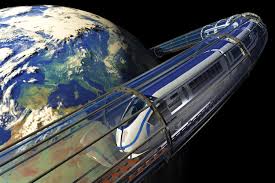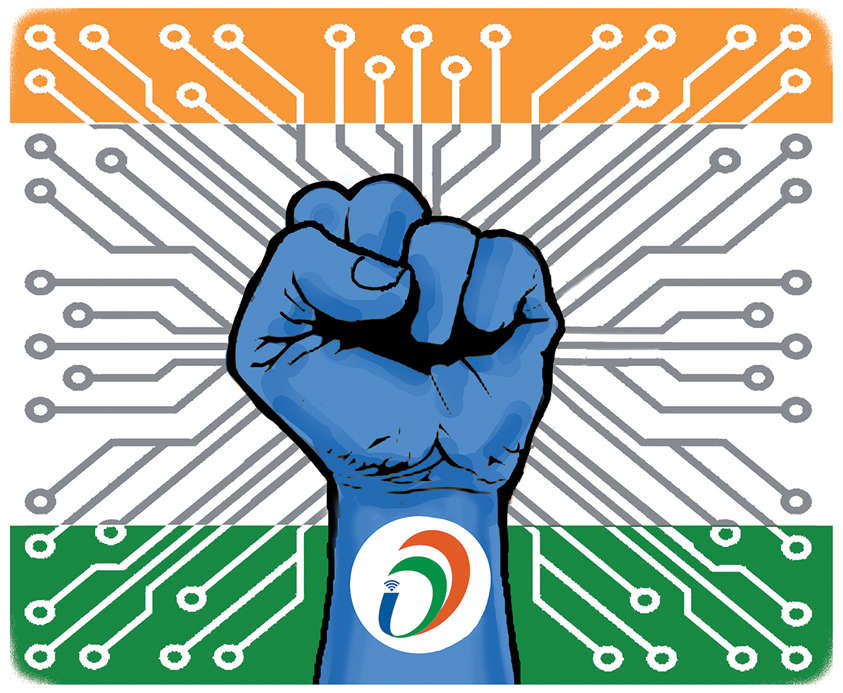
Future of Travel: Flying Cars, Hyperloop & Smart Roads
The future of travel envisions flying cars that soar above traffic, Hyperloop systems delivering ultra-fast intercity rides, and smart roads transforming driving safety and efficiency. These innovations aim to ease congestion, reduce pollution, and create seamless, connected journeys. Though challenges in infrastructure, regulation, and public acceptance remain, ongoing developments suggest a transformative shift in mobility within decades, promising faster, cleaner, and smarter transportation
✨ Raghav Jain

Introduction
The way we travel is on the brink of a revolutionary transformation. For decades, science fiction has painted a picture of flying cars, ultra-fast trains, and intelligent highways — but now these concepts are moving from imagination to reality. As urban populations grow and environmental concerns rise, new technologies promise to make travel faster, safer, greener, and more efficient.
In this article, we’ll explore three groundbreaking innovations shaping the future of travel: Flying Cars, the Hyperloop, and Smart Roads. We’ll understand how these technologies work, their benefits, challenges, and what they mean for our daily commute and global connectivity. The dream of a seamlessly connected, efficient, and rapid transportation system has long captivated human imagination, evolving from science fiction to a tangible pursuit driven by technological advancements. The future of travel is poised for a revolutionary transformation, moving beyond conventional cars, trains, and planes to embrace innovative concepts like flying cars, hyperloop systems, and smart roads. These technologies promise to drastically reduce travel times, alleviate congestion, enhance safety, and fundamentally reshape urban landscapes and global connectivity. However, their widespread adoption is contingent upon overcoming significant technological, economic, regulatory, and societal challenges.
Flying Cars: Taking to the Skies (and Roads)
The concept of a "flying car" has been a staple of futuristic visions for decades, and it is now closer to reality than ever before. Modern interpretations are typically categorized as Electric Vertical Take-off and Landing (eVTOL) vehicles or "roadable aircraft" – vehicles that can operate both on conventional roads and in the air. Companies like Joby Aviation, Archer Aviation, Alef Aeronautics (with its "Model A"), PAL-V (the "Liberty"), and Samson Sky (the "Switchblade") are at the forefront of this development, with some already having prototypes that have undergone successful test flights and even received preliminary certifications.
How They Work: Most contemporary flying car designs aim for VTOL capability, similar to a helicopter, but often using multiple electric rotors or ducted fans for lift and propulsion. This eliminates the need for runways, making them suitable for urban environments. Hybrid designs might use folding wings for flight and electric motors for road travel. The power source is increasingly electric, addressing environmental concerns, though battery weight remains a significant challenge for prolonged flight. The shift towards electric propulsion also makes them quieter than traditional aircraft, a crucial factor for urban air mobility.
Impact on Travel: Flying cars promise to revolutionize urban and inter-city travel by alleviating ground congestion. Imagine bypassing traffic jams by simply taking to the air, drastically cutting commute times. They could facilitate on-demand air taxi services, emergency medical transport that bypasses ground obstacles, and rapid delivery of goods. This could lead to a decentralization of urban populations, as commuting distances become less of a constraint.
Challenges: Despite the excitement, several hurdles remain. Infrastructure is a major one: cities would need "vertiports" for take-off, landing, charging, and maintenance. Air traffic control systems would require significant upgrades to manage a sky full of personal aircraft. Safety and regulation are paramount; ensuring the reliability of these complex machines and establishing clear rules for airspace usage are critical. Cost is also a barrier, with current prototypes priced in the millions, making them initially accessible only to a select few. Furthermore, noise pollution and public acceptance will be crucial factors in their widespread adoption.
Hyperloop: The Future of High-Speed Ground Travel
The Hyperloop, first conceptualized by Elon Musk in 2013, proposes a revolutionary high-speed transportation system for passengers and cargo. It envisions pods traveling at near-supersonic speeds through sealed, low-pressure tubes, propelled by magnetic levitation and linear electric motors. By removing most of the air resistance, the primary impediment to high speeds, the Hyperloop could achieve velocities exceeding 700 miles per hour (around 1,120 km/h), making inter-city travel incredibly fast.
How It Works: The core components are vacuum-sealed tubes, levitating capsules (pods) carrying passengers or cargo, and propulsion systems. A near-vacuum environment inside the tubes drastically reduces air drag. Magnetic levitation (maglev) technology lifts the pods above the track, eliminating friction. Linear induction motors accelerate and decelerate the pods. Companies like Hyperloop Transportation Technologies (HyperloopTT), TransPod, Virgin Hyperloop (now focusing on cargo), and The Boring Company are actively developing and testing prototypes of this technology. India's Avishkar Hyperloop team at IIT Madras has also completed a test track.
Impact on Travel: Hyperloop could fundamentally reshape regional and even continental travel. Journeys that currently take hours by car or plane could be reduced to minutes. For example, a trip from Delhi to Mumbai might be completed in under an hour. This would effectively shrink geographical distances, connecting cities into "megaregions" and opening up new possibilities for commerce, tourism, and daily commuting patterns. It could alleviate pressure on congested airports and conventional rail networks, offering a sustainable, high-capacity alternative.
Challenges: The challenges for Hyperloop are immense. Construction costs are staggering, with estimates ranging from $25-50 million per mile for the tube alone, excluding land acquisition for vast stretches of dedicated infrastructure. Maintaining the near-vacuum across hundreds or thousands of miles of tubing is a massive engineering feat. Safety concerns in a low-pressure environment, including emergency evacuation procedures, fire prevention, and the impact of rapid acceleration/deceleration on human physiology (nausea, vomiting), need robust solutions. Scalability and public acceptance are also critical. Will people be comfortable traveling in enclosed tubes at such high speeds? Regulatory frameworks for such a novel system are also non-existent and would need to be developed globally.
Smart Roads: The Intelligent Ground Network
While flying cars and Hyperloop represent entirely new modes of transport, "smart roads" aim to revolutionize the existing ground infrastructure by integrating advanced digital technologies. These are not merely passive pathways but active, intelligent networks that communicate with vehicles, infrastructure, and even pedestrians, creating a more efficient, safer, and sustainable transportation ecosystem.
How They Work: Smart roads leverage a combination of technologies, including:
- Sensors: Embedded in the road surface or alongside it, collecting real-time data on traffic flow, congestion, speed, weather conditions (ice, fog), road wear and tear, and even the presence of potholes.
- Cameras and AI: Used for real-time monitoring, incident detection, traffic pattern analysis, and predictive maintenance.
- Vehicle-to-Infrastructure (V2I) and Vehicle-to-Everything (V2X) Communication: Enables vehicles to communicate with the road infrastructure (e.g., traffic lights, digital signs) and with other vehicles or road users (pedestrians, cyclists).
- Wireless Charging: Technologies like inductive charging embedded beneath the road surface could wirelessly charge electric vehicles as they drive, eliminating range anxiety and the need for frequent charging stops.
- Renewable Energy Integration: Solar panels on road surfaces or alongside them could power streetlights, sensors, and other smart road infrastructure.
- Dynamic Traffic Management: Systems that can adjust speed limits, optimize traffic light timings, or reroute vehicles in real-time to mitigate congestion or respond to incidents.
Companies like Siemens, Honeywell, Panasonic, and Schneider Electric are developing intelligent traffic management systems and integrating smart technologies into road infrastructure.
Impact on Travel: Smart roads will significantly enhance the efficiency and safety of conventional ground transportation. They promise:
- Reduced Traffic Congestion: Through real-time rerouting, optimized traffic light sequencing, and intelligent lane management.
- Improved Safety: By detecting hazards (e.g., black ice, debris, stopped vehicles) and alerting drivers or autonomous vehicles instantly, significantly reducing accidents.
- Enhanced Sustainability: By optimizing traffic flow, reducing idling vehicles, and enabling seamless electric vehicle charging, thereby lowering fuel consumption and emissions.
- Support for Autonomous Vehicles: Providing the vital communication and contextual data that self-driving cars need to operate safely and efficiently.
- Predictive Maintenance: Road authorities can identify and repair damage before it becomes severe, extending infrastructure lifespan and reducing long-term costs.
Challenges: The primary challenges for smart roads include the enormous financial investment required for retrofitting existing infrastructure and building new ones. Technology integration and compatibility across different manufacturers and systems present a significant hurdle, necessitating global standardization. Cybersecurity is paramount, as a hacked smart road system could have catastrophic consequences. Data privacy concerns arise from the vast amounts of real-time data collected from vehicles and users. Finally, legal and regulatory frameworks need to evolve to address liability issues in a highly connected environment.
The Interconnected Future
The future of travel will likely not be dominated by a single technology but rather a synergistic ecosystem where flying cars, hyperloop, and smart roads (alongside enhanced conventional transport like high-speed rail and autonomous vehicles) complement each other. Flying cars might handle short-to-medium urban air mobility, Hyperloop could connect distant cities, and smart roads would serve as the intelligent backbone for efficient ground movement, particularly for autonomous vehicles and last-mile delivery. The convergence of these innovations, driven by advancements in AI, 5G/6G connectivity, and sustainable energy solutions, promises a future of unprecedented mobility, efficiency, and interconnectedness. However, navigating the complex web of technical, economic, and societal challenges will require significant international collaboration, robust policy-making, and a public willing to embrace a radically different way of moving.
The Rise of Flying Cars
What Are Flying Cars?
Flying cars, also called VTOLs (Vertical Take-Off and Landing vehicles), are hybrids between cars and aircraft designed to drive on roads and take off vertically into the air, bypassing traffic jams and long commutes.
How Do They Work?
Flying cars combine drone-like rotors or propellers with aerodynamic wings. Some models rely on electric power for quiet and clean flight, while others use hybrid engines. Thanks to advances in batteries and AI-driven navigation systems, these vehicles aim for safe autonomous flying.
Benefits of Flying Cars
- Traffic Decongestion: Bypass ground traffic and reduce commute times.
- Accessibility: Reach remote or disaster-hit areas where roads are damaged.
- Eco-Friendly: Electric models emit less pollution than traditional cars and planes.
- Urban Mobility: Open up 3D travel pathways above congested cities.
Challenges to Overcome
- Safety & Regulations: Strict air traffic control and certification needed.
- Infrastructure: Need for “vertiports” for takeoff, landing, and charging.
- Cost: Currently expensive for mass adoption.
- Noise & Privacy: Managing sound pollution and airspace usage.
Current Progress
Companies like Terrafugia, Vertical Aerospace, and Joby Aviation are testing prototypes. Some flying taxis have begun limited commercial operations in cities like Dubai and Los Angeles.
Hyperloop: The Future of Ultra-Fast Land Travel
What is Hyperloop?
The Hyperloop is a high-speed transport system where passenger pods travel inside near-vacuum tubes on magnetic levitation tracks, drastically reducing air resistance and friction.
How Does it Work?
- Pods float on magnetic cushions (maglev) inside sealed tubes.
- Air pressure inside the tubes is reduced to near vacuum, allowing pods to travel at speeds exceeding 700 mph (1126 km/h).
- Linear motors propel the pods smoothly and efficiently.
Advantages of Hyperloop
- Extreme Speed: Cuts down travel time between cities drastically (e.g., NYC to DC in under 30 minutes).
- Energy Efficiency: Uses renewable energy and less power than planes or trains.
- Safety: Enclosed system protected from weather and accidents.
- Environmental Benefits: Zero direct emissions, noise reduction, and minimal land use.
Obstacles Ahead
- Huge Infrastructure Costs: Building tubes and stations requires massive investment.
- Regulatory Approvals: Need coordination between governments and agencies.
- Technical Challenges: Maintaining vacuum conditions, passenger comfort at high speeds.
- Public Acceptance: Concerns about safety and new technology adoption.
Where Are We Now?
Companies like Virgin Hyperloop and Hyperloop Transportation Technologies have built test tracks and completed successful prototype runs. Governments of several countries are exploring feasibility studies for commercial hyperloop routes.
Smart Roads: The Intelligent Infrastructure
What Are Smart Roads?
Smart roads integrate technology into the roadway itself—equipped with sensors, solar panels, LED lights, wireless charging, and communication networks to support autonomous vehicles and improve traffic flow.
Key Features of Smart Roads
- Embedded Sensors: Monitor traffic density, road conditions, and weather in real time.
- Wireless Charging: Enable electric vehicles to charge while driving via inductive charging lanes.
- Dynamic Lighting: Adjust lighting based on time of day or traffic, saving energy.
- Vehicle-to-Infrastructure Communication (V2I): Allow cars and roads to exchange data for safer, efficient driving.
- Self-Healing Asphalt: Materials that repair cracks automatically, extending road life.
Benefits
- Safety: Alerts drivers of hazards, reduces accidents.
- Efficiency: Decreases traffic jams through adaptive signals and lane management.
- Sustainability: Supports electric vehicles and reduces energy consumption.
- Reduced Maintenance Costs: Innovative materials lower repair frequency.
Challenges
- Cost & Maintenance: High initial costs and complex repairs.
- Data Privacy & Security: Protecting user and vehicle data from cyber attacks.
- Standardization: Need global standards for communication protocols.
- Integration: Compatibility with existing infrastructure and diverse vehicles.
Examples in Action
- The Netherlands and South Korea have pilot smart road projects with wireless EV charging.
- France tested solar roads to generate renewable energy for street lighting.
- The U.S. Department of Transportation is funding smart highway research focused on safety.
How These Technologies Will Shape Daily Travel
- Commuters could take flying taxis from home rooftops to offices in minutes.
- Intercity travel might be replaced by hyperloop pods zooming faster than airplanes.
- Electric cars will stay charged dynamically as they move on smart highways.
- Roads will communicate with vehicles to prevent collisions and optimize traffic lights, making driving smoother.
The future promises travel that is safer, faster, eco-friendly, and much more connected.
Daily Practices to Prepare for the Future of Travel
- Stay Informed: Follow updates on new transport tech in your region.
- Embrace Electric Vehicles (EVs): Switch or support EVs as smart roads and charging grow.
- Adapt to Mobility Apps: Use ride-sharing, e-taxi apps, and transit platforms for seamless travel.
- Advocate for Infrastructure: Support local policies for smart roads and public transit improvements.
- Practice Safety: Be aware of new vehicle features and road communication systems.
Common Myths About Future Travel Technologies
“Flying cars will replace all cars soon.”
→ False. Flying cars will complement, not replace ground vehicles, especially in urban and rural mix.
“Hyperloop is just a pipe dream.”
→ While challenges remain, functional prototypes prove it’s closer to reality than ever.
“Smart roads will spy on drivers.”
→ Data privacy is a serious concern, but regulations and encryption aim to protect users.
“These technologies are only for the rich.”
→ Early adoption may be costly, but mass production and public infrastructure will make them accessible.
“Self-driving vehicles make roads unsafe.”
→ Autonomous systems aim to reduce human error—the cause of most accidents.
Sample Vision: A Day in the Future of Travel
- Wake up and book a flying taxi from your rooftop vertiport.
- Arrive at a smart hyperloop station and zip across cities in under an hour.
- Your electric car charges wirelessly as you drive on a smart highway.
- Traffic lights and road sensors communicate with your car to avoid delays and hazards.
- Your commute is stress-free, fast, and eco-friendly.
Conclusion
The future of travel is an exciting fusion of technology, sustainability, and convenience. Flying cars, hyperloop systems, and smart roads each bring unique solutions to today’s traffic, pollution, and mobility challenges. Together, they promise a world where moving from place to place is faster, safer, and better for the planet.
While we await these innovations to become mainstream, staying informed, embracing electric mobility, and supporting smart infrastructure development will prepare us for this new era.
The sky, the tracks, and the roads ahead are evolving—opening limitless possibilities for how we explore the world.
Q&A Section
Q1:- What are flying cars and how will they change urban transportation?
Ans :- Flying cars are electric or hybrid vehicles capable of vertical takeoff and landing (VTOL), combining air and road travel. They promise to reduce traffic congestion, shorten commute times, and provide flexible, on-demand personal transportation in cities.
Q2:- How does the Hyperloop technology work and what benefits does it offer?
Ans :- Hyperloop uses low-pressure tubes and magnetic levitation to propel pods at high speeds (up to 700 mph). It offers ultra-fast, energy-efficient, and safe intercity travel, potentially revolutionizing how people and goods move over long distances.
Q3:- What are smart roads and how do they improve driving safety and efficiency?
Ans :- Smart roads integrate sensors, IoT devices, and adaptive materials to monitor traffic, weather, and road conditions in real time. They communicate with vehicles to optimize speed, reduce accidents, manage traffic flow, and support autonomous driving.
Q4:- How will flying cars address current challenges in urban mobility?
Ans :- By using airspace for travel, flying cars bypass ground traffic jams, reduce pollution with electric propulsion, and offer door-to-door transport, improving accessibility especially in congested or poorly connected areas.
Q5:- What infrastructure developments are required for Hyperloop systems?
Ans :- Hyperloop needs dedicated vacuum-sealed tubes, stations for boarding and maintenance, advanced propulsion and braking systems, and regulatory frameworks to ensure safety and integration with existing transport networks.
Q6:- How do smart roads support the future of autonomous vehicles?
Ans :- Smart roads provide real-time data and communication channels that autonomous vehicles rely on to make safer, faster decisions, enabling smoother traffic flow and reducing human error-related accidents.
Q7:- What environmental impacts could arise from adopting flying cars and Hyperloop?
Ans :- Flying cars, especially electric models, can reduce urban emissions, while Hyperloop’s energy-efficient design lowers carbon footprint compared to planes or cars. However, infrastructure construction and energy sources must be managed sustainably.
Q8:- What challenges exist in integrating flying cars into existing airspace and traffic systems?
Ans :- Challenges include developing air traffic control systems for low-altitude urban airspace, safety standards, noise pollution control, pilot training or autonomous flight systems, and public acceptance.
Q9:- How might smart roads change the everyday experience of driving?
Ans :- Drivers will benefit from real-time hazard warnings, dynamic speed limits, automatic toll collection, road condition updates, and better navigation assistance, making travel safer, faster, and less stressful.
Q10:- When can we expect these technologies to become mainstream in daily travel?
Ans :- While prototypes and pilot projects exist today, widespread adoption may take 10–20 years due to technological, regulatory, and infrastructural hurdles, though smart roads and limited flying car services could appear sooner.
Similar Articles
Find more relatable content in similar Articles

Technazo* – Fresh tech trends,..
Technazo is a dynamic platform.. Read More

Daily.dev* – Developer-focused..
Daily.dev is a developer-focus.. Read More

Digital India: How Technology ..
Digital India leverages techn.. Read More

MakeAnAppLike – Shares trendin..
“MakeAnAppLike is a comprehens.. Read More
Explore Other Categories
Explore many different categories of articles ranging from Gadgets to Security
Smart Devices, Gear & Innovations
Discover in-depth reviews, hands-on experiences, and expert insights on the newest gadgets—from smartphones to smartwatches, headphones, wearables, and everything in between. Stay ahead with the latest in tech gear
Apps That Power Your World
Explore essential mobile and desktop applications across all platforms. From productivity boosters to creative tools, we cover updates, recommendations, and how-tos to make your digital life easier and more efficient.
Tomorrow's Technology, Today's Insights
Dive into the world of emerging technologies, AI breakthroughs, space tech, robotics, and innovations shaping the future. Stay informed on what's next in the evolution of science and technology.
Protecting You in a Digital Age
Learn how to secure your data, protect your privacy, and understand the latest in online threats. We break down complex cybersecurity topics into practical advice for everyday users and professionals alike.
© 2025 Copyrights by rTechnology. All Rights Reserved.